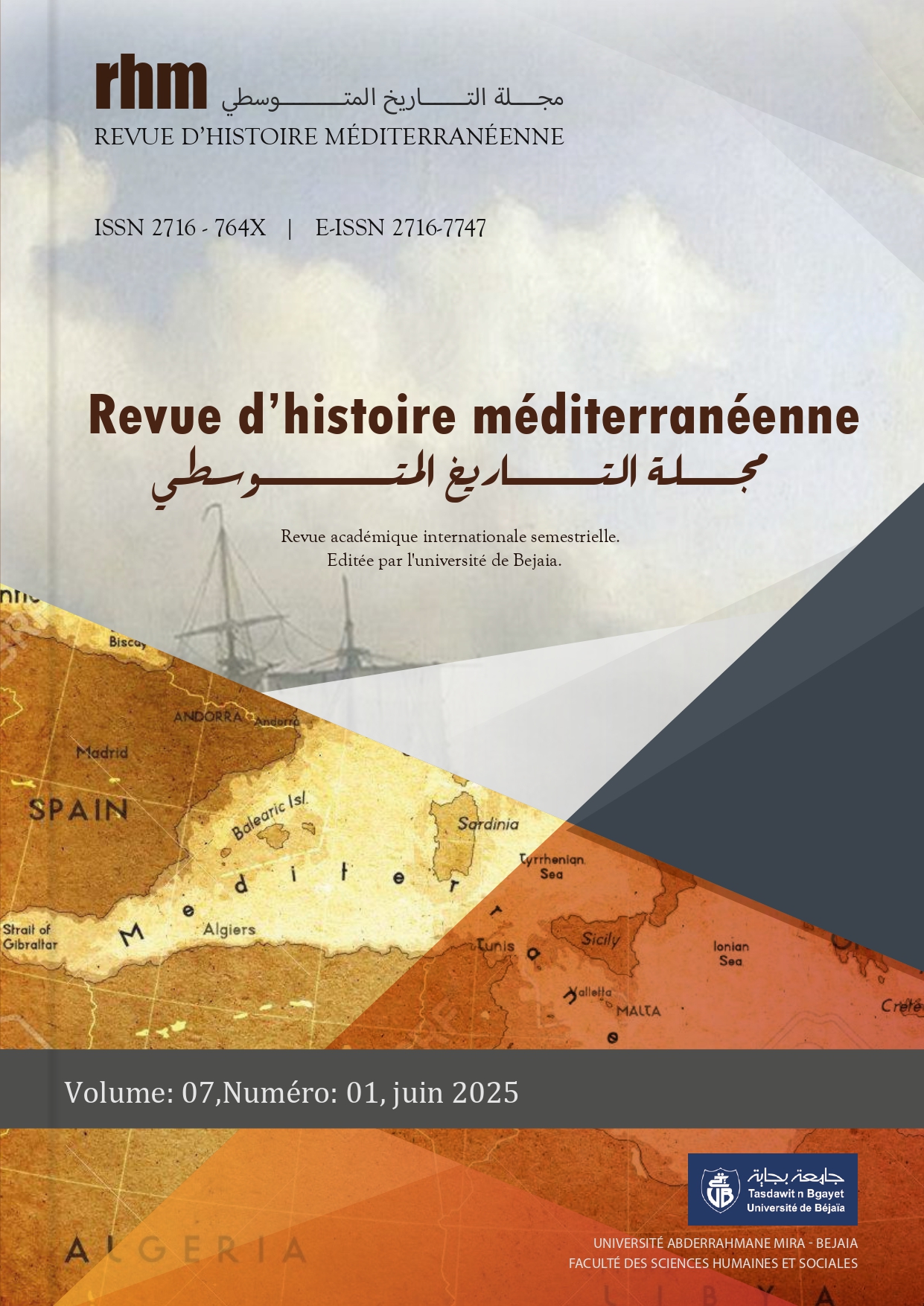The organisation of port space at Iol- Caesarea Mauretania: A reconstruction through archaeology and environmental history
L’organisation de l’espace portuaire de Caesarea Mauretania : Une reconstitution entre archéologie et histoire environnementale
Abstract
The most emblematic of Algeria's ancient cities, Caesarea Mauretania, saw its port area develop from a simple maritime nucleus of the Iol agglomeration into an imposing architectural entity, an economic, cultural and political converge for the royal capital of Mauretania, then a Roman province, and later a Byzantine one, before falling into ruin and being reclaimed by nature. The location of this major port on such a challenging site, on a cliff overlooking an exposed bay to north and north-west wind, raises questions about the choice made by ancient societies to build and maintain such a complex, despite the predominantly steep and hostile Algerian coastline. This study aims to understand the interaction between human activity and the natural environment, as well as highlighting their architectural and conceptual adaptation, but also to analyse the adjustment strategies deployed to reconcile the economic imperatives inherent in the status of the ancient city with the challenges of an unstable environment, identifying the technical and structural responses, such as the use of roman hydraulic concrete jetties and systematic dredging practices, that have enabled it to continue its activity despite natural, climatic and historical hazards.
This article offers a reconstruction of the organisation and evolution of this port area, through an approach combining archaeology, geography and environmental history, drawing on archaeological analysis of port structures identified since the XIXth century, including basins, jetties and the Hellenistic-style lighthouse, as well as its landward extension, through Military Engineering studies and excavation reports, as well as rare, but valuable, underwater observations made with the introduction of the scuba diving apparatus, and spatial archaeology initiated by Jean BARADEZ, featuring the aerial identification and organisation of the structures. On the other hand, geomorphological studies provide insight into coastal transformations, including the reformation of the medieval tombolo, and bathymetric evolution based on ancient sediment cores taken in the 1990’s and historical Hydrology Services maps from 1871 to 2024. Finally, historical contextualisation using ancient sources such as Pseudo-Scylax, Strabo and Pomponius Mela, allows us to appreciate the topographical potential, that the site of Cherchel held in the eyes of the ancient community, and to place it back in its historical environment.
The results demonstrate that the expansion of the port, from its initial core at Iol to its Roman monumental scale, was a response to a process of continuous adaptation. The Roman piers, oriented to counter the prevailing currents, reduced silting in the channels and provided a safe berthing area for ships, while regular dredging maintained a functional depth in the western basin. The gradual abandonment of the site marked the end of this symbiosis between technical innovation and environmental resilience.










